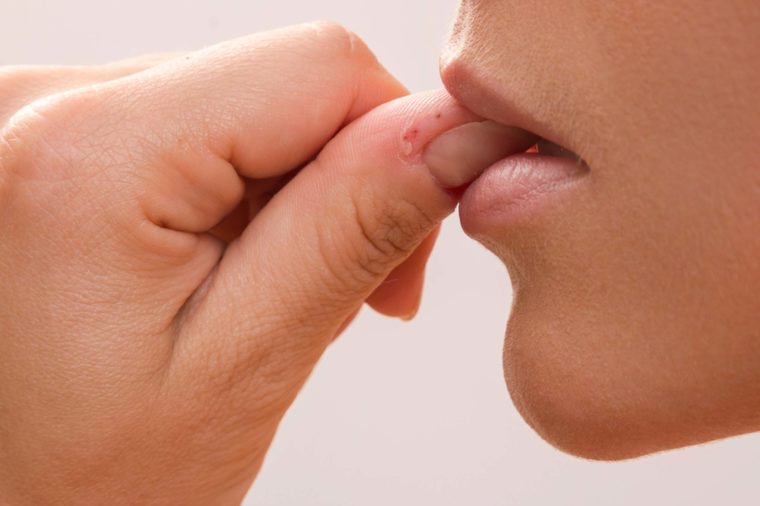Have you ever had someone call you out on a bad habit, tic, or weird behavior you had no idea you were guilty of? Like cracking your knuckles constantly? Or biting your nails? If you take a good look around at a crowd of people—such as the long waiting game that is the DMV—you might begin to realize most of us have behaviors that we unconsciously engage in when we are in stressful situations.
And while other’s tics may annoy us, in our own lives, such tics are only considered something to address when they begin to interfere with daily life.
But research suggests there’s more to a tic than we think. “If we dive into the research and look at disordered, unwanted repetitive behaviors as well as nonclinical, non-impairing repetitive behaviors, they all involve the region of the brain called the basal ganglia, which is involved in motor control,” clinical psychologist Ali Mattu told The New York Times.
Experts separate recurring, nonfunctional motor behaviors into three overlapping categories:
Non-classic tics: quick, jerky motions of the head, neck or arms (throat clearing falls into this category)
Stereotypies: fluid, rhythmic motions like body rocking or leg bobbing
Body-focused repetitive behaviors: compulsive grooming, like nail-biting
Such behaviors—be it nail-biting, hair twirling, knuckle cracking, or throat clearing—are, according to research, coping mechanisms that stem from childhood. Essentially, your simple foot shaking tic is a sign that something was off in your younger years. This doesn’t necessarily mean you require therapy as an adult, however, but it shouldn’t be overlooked.
How do tics arise?
The basal ganglia isn’t a term that slides off the tongue easily. It’s also not really understood. A collection of nuclei present on both sides of the thalamus (the large mass of gray matter in the dorsal part of the diencephalon of the brain), the basal ganglia serves as a movement command center of the brain. When situations arise, it pinpoints which motions or gestures you’ve learned and picks one. So when stressful or frustrating situations arise, your basal ganglia uses a default motor behavior, AKA your tic, stereotypies, or motor habit.
When uncomfortable situations occur during childhood, the immature brain uses motor activity to cope, because the immature brain is incapable of recognizing and processing emotions. You’ll see kids shaking their heads, flapping their arms, or stomping and swinging their feet to cope. Such tics typically go away, except, of course in the case of severe autism or Tourette syndrome. (Learn more about what Tourette syndrome is.)
Often kids’ weird tics turn into more socially acceptable ones as they get older, however, like mouth-stretching turning into gum chewing.
Because they become socially acceptable, most people don’t seek treatment. In fact, they typically find such behaviors comforting. But there are various downsides to tics. For instance, neck tics can harm to vertebrae, skin-picking can lead to scars, and knuckle cracking can make the people around you cringe. Your love life, your social life, your job could all be at risk as a result. And these are mild examples.
Many experts agree that tics are a form of communication, so the first step is understanding why we have certain behaviors. Is it tension? Boredom? Anxiety?
Along with speaking to an expert, the first you can try to do is recognize when your tic is happening, and stop.
While some are more severe than others, the message here is that there is a clear need to employ healthier self-soothing mechanisms that lessen the urge to partake in such unconscious, addictive behaviors, and ensure we don’t interrupt our daily lives as well as others’. The next time you’re stressed out, try one of these 37 tips from stress management experts instead.












